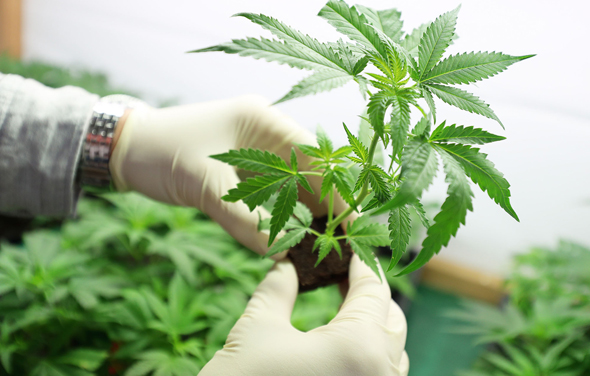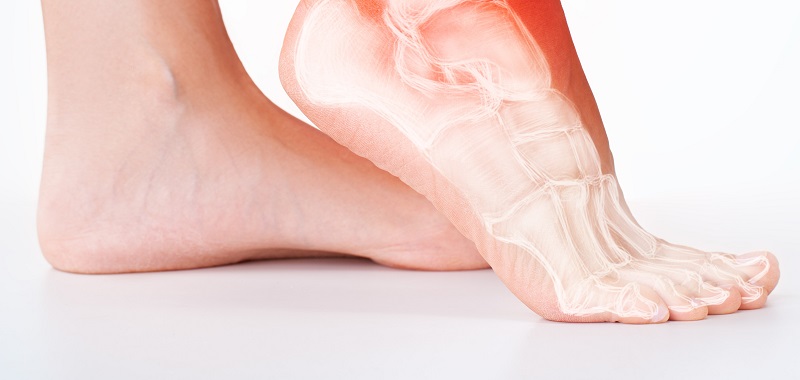Benefits of Topical CBD Application to Glaucoma Patients

Over the years, several studies have been carried out to understand the medicinal value of CBD. This miracle plant has been in use since time immemorial and has helped alleviate painful symptoms associated with several illnesses.
CBD is quite versatile in its ability to treat pain and discomfort across a wide variety of medical conditions, and ever since its legalization in a few countries, it has been further researched. Aside from recreational use, this medicinal component of the cannabis plant has been able to provide breakthrough discoveries in the field of healthcare.
In this article, we look into the benefits of topical CBD application and how effective it is for people suffering from glaucoma.
What is glaucoma?
Glaucoma is one of the most prevalent eye conditions in the world. People who suffer from glaucoma have a damaged optic nerve, and this negatively impacts their vision. Glaucoma is most commonly seen in people above the age of 60 and continues to be one of the leading causes of blindness for people within this age group.
While there are several forms of this condition, the two most common ones are primary open-angle glaucoma (POAG) and angle-closure glaucoma (ACG). POAG is considered to be the more dangerous one of the two, as it shows little to no symptoms until the person has lost a significant portion of their sight. In fact, studies show that over three million people in the U.S. have glaucoma, but only half of them know about it.
The other known types of glaucoma include Normal-Tension Glaucoma, Secondary Glaucoma, Pseudoexfoliative Glaucoma, Congenital Glaucoma, Neovascular Glaucoma, Traumatic Glaucoma, Pigmentary Glaucoma, and Irido Corneal Endothelial Syndrome (ICE).
Glaucoma typically arises as a result of damage to the optic nerve. As the nerve gradually weakens, it leaves behind blind spots in our field of vision. The nerve damage is known to occur due to an increase in pressure in the eye (intraocular pressure), and how this occurs is still being studied.
The eye pressure we speak about here takes place because of a build-up of a fluid that is present in the inside of your eye. This fluid is meant to drain itself out occasionally, but when there is excess fluid that doesn’t get drained out correctly, it puts a lot of pressure on the eyes.
There are several risk factors that can lead to a person developing glaucoma, and the strongest of all is genetics. If either one of your parents or family member has suffered or suffers from glaucoma, there is a high chance that you might also develop it at a later stage in your life. Besides this, people over the age of 60, especially those of Black, Hispanic, and Asian heritage are at risk of developing this condition. Other risk factors include medical conditions like diabetes, high blood pressure, and sickle cell anemia, as well as being extremely near or far-sighted, having had an eye injury, diagnosis of a thin cornea in your eyes, or having unusually high internal eye pressure.
What are the symptoms of glaucoma?
As we mentioned earlier, there are two primary types of glaucoma. Most people around the world who suffer from this condition have either one of the two types of glaucoma discussed here.
- Symptoms of open-angle glaucoma
As it is the riskier one of the two common types of glaucoma, it is very important to know even the slightest of symptoms associated with this condition.
People who have open-angle glaucoma usually don’t notice a change in their vision at the beginning stages of the disease, as the vision doesn’t blur or get distorted as one would naturally assume. The initial stages of vision loss happen with peripheral or side vision, which is something that most people are not consciously aware of in their day-to-day life. Until the later stage of the disease, the person does not witness any decrease in the sharpness of their vision, which is why it is so common that glaucoma is usually detected only at the advanced stages.
The only way to prevent open-angle glaucoma is to make regular eye check-ups a priority. This holds especially true if you are in the at-risk category of people who could develop this condition. Eye check-ups can help doctors identify if there is increased pressure in your eyes, and they can start a preventative treatment to help you recover before its too late.
- Symptoms of acute angle-closure glaucoma
As with any other type of glaucoma, angle-closure glaucoma also occurs due to an increase in eye pressure, and eventual optic nerve damage. With acute angle-closure glaucoma, the iris of the eye bulges forward and narrows or blocks the drainage angle formed by the cornea and iris. This does not allow the fluid to circulate and drain properly and results in increased eye pressure. People who are diagnosed with narrow drainage angles are undoubtedly more susceptible to developing acute angle-closure glaucoma. Interestingly, this variant of the condition can take place suddenly or gradually.
Acute angle-closure glaucoma should be treated as a medical emergency. The primary symptoms associated with this condition are blurred or hazy vision, severe head and eye pain, sudden alteration to sight, seeing rainbow-colored circles when looking at bright lights, and nausea or vomiting. If you are experiencing any of these symptoms, along with severe eye pain, you need to visit your eye doctor at the earliest.
How can the topical application of CBD help treat glaucoma?
Several doctors and eye experts around the world remain perplexed due to the lack of a straightforward solution or treatment to prevent glaucoma. Several studies have been carried out over the years to understand how this condition can be avoided or treated without the need for eye surgery. Of these, many studies have sought to understand the effects of CBD on patients suffering from glaucoma.
One of the most prominent studies that lead the way for others was the 1971 study by Hepler and Frank. One of the major discoveries of this study was that cannabis was found to lower intraocular pressure by up to 30%. Although this was an extremely valuable study, direct cannabis administration was ruled out for several reasons. To be able to see the complete effects, the person would have to stay high for the majority of the day, as the intoxication comes down in just a few hours. Yet another issue was that of addiction or increased dependence on the numbing effects offered by cannabis.
The major takeaway from this study was that the effects of cannabis on glaucoma patients had to be further researched until a viable solution was found. The breakthrough occurred in 1992 when the human endocannabinoid system was discovered.
The ECS or Endocannabinoid system plays a very important role in detecting inflammation and in neuroprotection. Our eye has CB1 cannabinoid receptors in the ocular tissues, which are responsible for monitoring eye pressure. A study from 2016 also monitored the CB1 and CB2 receptors in monkeys, which provided evidence that the manipulation of the ECS can help restore normal vision and even protect the retina.
In the end, it was identified that the administration or usage of just CBD could help treat glaucoma, without inviting any of the other negative side effects. Cannabidiol, or CBD, is one of the non-intoxicating cannabinoids of the marijuana plant. It is separate from THC and other psychoactive compounds in marijuana, which are mostly known to provide the ‘high’ that marijuana smokers attain from consuming the drug.
Considering the same, CBD is a highly potent medicinal compound, as it can effectively treat a variety of conditions, without being addictive for the user.
Why does CBD work as an effective treatment for glaucoma?
Several studies have been able to showcase that CBD, when extracted from the marijuana plant, contains many valuable medicinal properties. It acts as a vaso-relaxant, which means that it can help increase the level of ocular blood flow. Along with this, CBD also contains anti-inflammatory properties that can help reduce or treat the common side-effects of glaucoma. CBD is a known analgesic and anti-nausea drug, which is why people turn to this medicinal plant to deal with nausea, vomiting, and pain. Either way, CBD can help the glaucoma patient get a hold over their condition, and avoid further discomfort and pain.
What benefits are associated with CBD use for glaucoma patients?
Glaucoma causes nerve damage and blindness due to the excessive production of glutamate. This chemical is capable of killing neurons in the retina, which takes place when it facilitates the formation of peroxynitrite. As per scientific studies, the usage of CBD can prevent the formation of peroxynitrite. This means that it acts as a shield for the neuron nerves and provides protection to the eye, even if the person is predisposed to the condition. This minimization of cell death is considered to be the biggest benefit of CBD use for glaucoma patients.
A study published in the International Journal of Pharmacology and Biopharmacology in 1979 further illustrated the benefits of CBD use for glaucoma patients. In this study, 16 patients with open-angle glaucoma were given CBD treatment, and their results were studied carefully. It was observed that after consuming CBD, the patients experienced a significant reduction in their blood pressure, accompanied by an increase in their heart rate. These effects also led to a decrease in intraocular pressure, which is considered to be the main cause of glaucoma.
With so many positive benefits, it was no surprise that experts all over the world continued studying the effects of CBD in glaucoma patients so that effective remedies could be rolled out at the earliest.
How can CBD be safely consumed to treat glaucoma?
There have been some concerns surrounding the use of CBD oil to treat glaucoma, as it contains a higher dose of the active component, and could lead to undesirable effects. Similarly, many people have taken to vaping CBD, which is a potent way to consume the compound but is not a viable solution.
The most well-researched and effective way of CBD consumption for glaucoma patients was discovered to be via topical application. The human eye responds to topical applications very well, which makes it easier to produce optimal results.
A recent clinical trial report from 2018 also noted that the topical application of CBD in the form of eye drops produced an anti-inflammatory effect, which reduces intraocular pressure significantly.
Other forms of CBD consumption provide a much shorter window of relief. When marijuana is smoked, the person experiences the effects for just about 2 hours, after which their discomfort may return. Similarly, sublingual dosage showcased effects for just 4 hours after use. On the other hand, eye drops are known to provide relief for about 8-12 hours, which indicates that it doesn’t have to be a hassle to keep up with in the patient’s normal day-to-day life. Considering that is also one of the safer means of consuming CBD, it will not cause dependency for the user.
Each person has varying degrees of pain and eye damage caused by glaucoma. Remember to consult with a certified eye doctor to determine the best form of CBD consumption for you, and don’t opt for self-treatment unless cleared by your doctor.
In conclusion
As evidenced by many studies, when CBD is used correctly, it has the potential to lower intraocular pressure (IOP) to a great extent. It also offers protection to the patient’s retinal cells, which can prevent further damage to the vision.
CBD is also known to have certain vaso-relaxant properties that facilitate enhanced blood flow to the eyes, which secures the overall health of the optic nerves and cells. In addition, the anti-inflammatory and analgesic properties offered by CBD can help combat the uncomfortable side effects of glaucoma and prevent further pain and suffering for the user.
CBD is non-intoxicating, which makes it very difficult for the user to become addicted to it. Compared to the several drugs available in the market today, this medicinal plant is a safer and more trusted treatment for not just glaucoma, but also a variety of other physical ailments known to us.
More articles:











